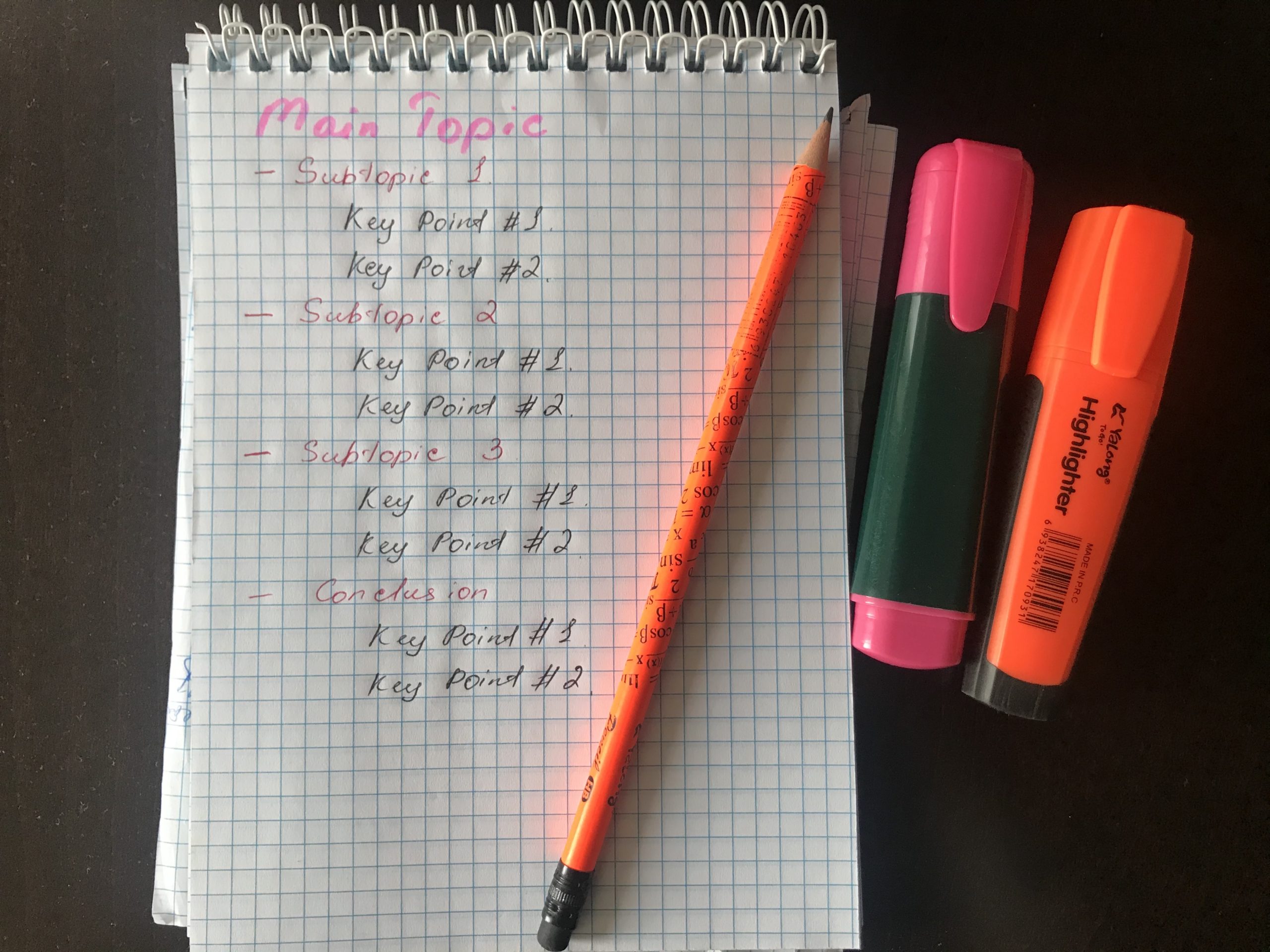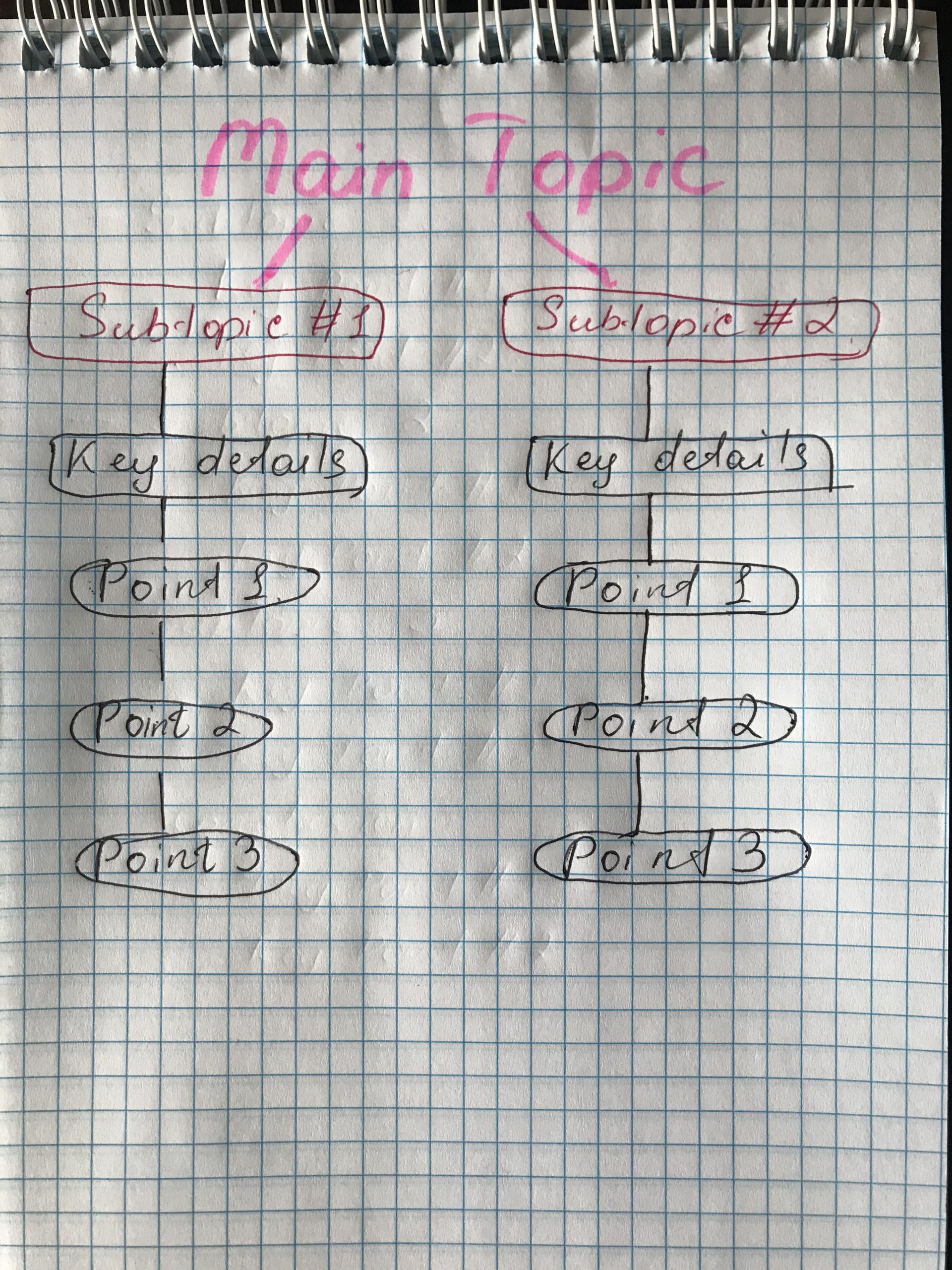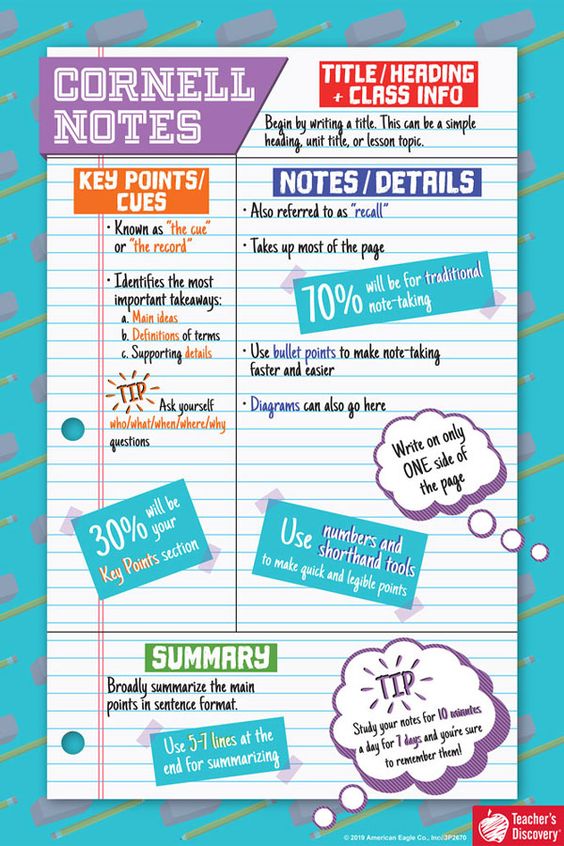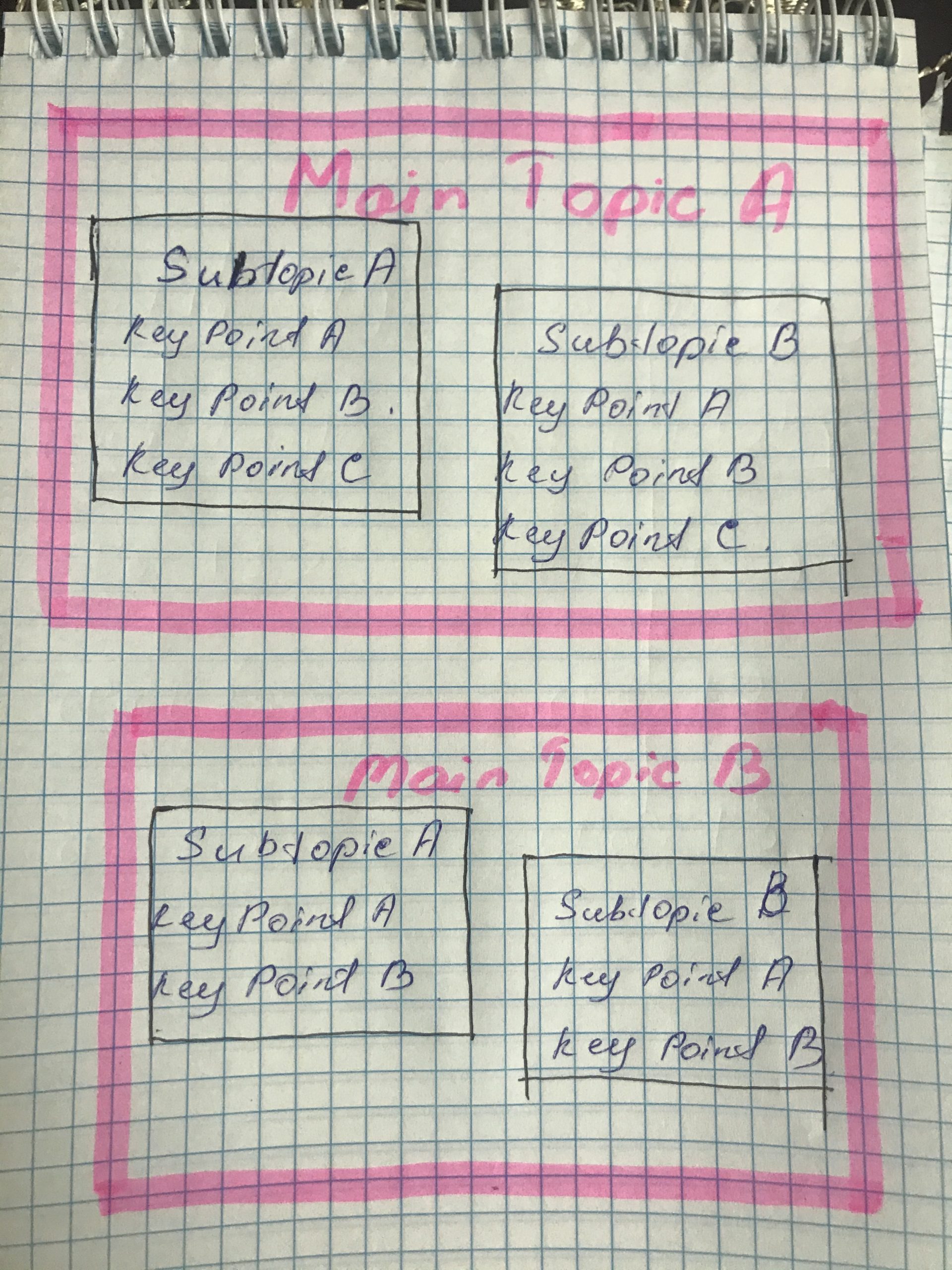Effective note-taking is considered to be a key to successful learning procedure and memorization. This strategy is of utmost importance while preparing for exams, taking the TOEFL exam or doing reading, writing, listening and speaking activities. Taking notes is about summarising the main idea of the activity in your own words. These notes help students to recall the information. Note-taking requires special skills and knowledge. Unfortunately, some teachers do not pay proper attention to it thinking that students may gain these skills without being taught. As for me, I definitely recommend all teachers to devote at least 20 minutes to teach your students the best and the most useful note-taking techniques. Here we suggest some methods and tips to be used while taking notes.
The Outline method
The outline method is one of the most widespread techniques among students. Here they structure their notes in the form of an outline by using key points to introduce different topics with their subtopics. This technique is very helpful especially when the topic includes lots of details. It can be applied in various situations, for example when the teacher asks students to read or listen to the text and give the main idea of it, or when the student is required to retell the text, speak about some topic, etc.

The Mapping method
Mind-mapping has become one of the most flexible and helpful techniques in language teaching that can be applied in quite different spheres, and note-taking is not an exception. This method works properly with visual learners. It is extremely effective when studying and comparing two topics and finding connections between them.
Students begin the map with the main topic. Then they add branches to the topic and write a heading for each of the subtopics. Under each subtopic, they can add some important notes and continue the pattern. This can be done both with a sheet of paper and a pen, and of course, those who want to go digital can use online mind-maps. You can also find an interesting article on how to use mind-mapping in language education here.

The Cornell Method
This technique suits almost all types of classes and activities. Here students divide the paper into 3 parts — main notes, cues and summary. During the class (listening or reading activity) they take notes in the section of main notes. Then they add some key points, promts, questions and words in the cue section. In the summary section students highlight the main idea of the material (they can also use this section for questions, errors, etc.) This technique summarizes all the information in a systematic manner, helps students to absorb information in a shorter time and extract main ideas.

The Boxing Method
As the name suggests here the information and the key points that are closely correlated with each other are written down in one box. This method works best if your lesson is divided into several parts that are still logically related to each other. The boxing method helps students to focus on one box and to memorise the relation between the notes.

Tips and tricks for taking notes
Before taking notes, ask your students to follow the tips.
— Write keywords, not full sentences.
— Take notes in your own words.
— Structure your notes with headings, subheadings and numbered lists.
— Underline key points.
— Use symbols and abbreviations where possible.
— Use different colours to highlight the important parts.
— Write down questions that refer to the main topic, as well as the subtopics.
Do you teach your students how to precisely take notes? What technique works best?







 Маргарита Аветисян
Маргарита Аветисян 


